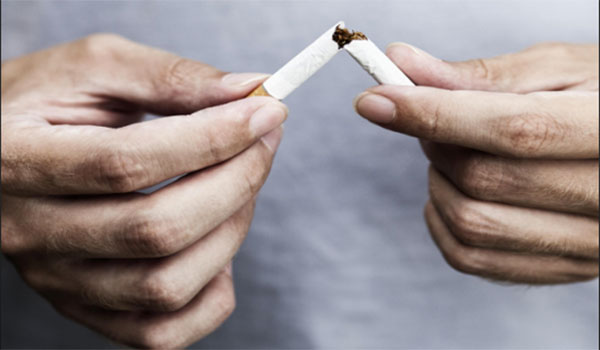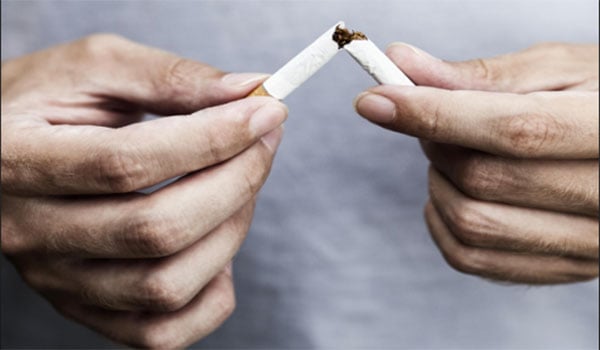
Ask the Flight Surgeon / By MAJ Sonya Horwell, M.D: Q: Doc, I want to stop smoking. What resources are available? Can I use any medications and still remain on flight status?

FS: You are making the right choice. More than 400,000 deaths in the United States are attributed to cigarette smoking every year. Studies have shown associations between smoking and coronary heart disease, lung disease, peptic ulcer disease, impotence, and pregnancy complications. It also has been shown to increase your risk of developing certain cancers within the lungs, head, neck, esophagus, pancreas, and bladder. In addition, smoking accelerates skin aging and causes unsightly yellowing of your fingers and teeth. However, you can decrease your risk and even completely reverse many of the effects from cigarette smoking by quitting. After one year, you can reduce the risk of dying from coronary heart disease by 50% as compared to your peers who continue to smoke. After two years, your risk of coronary heart disease will be equal that of a non-smoker. It is definitely never too late to stop smoking.
Secondhand smoke exposure is linked to 40,000 deaths each year. By quitting, you are also improving the health of your immediate family and friends. Children who are exposed to secondhand smoke are more likely to develop asthma, respiratory infections, ear infections, or die from sudden infant death syndrome (SIDS). Adults with secondhand smoke exposure are at increased risk of developing coronary heart disease, stroke, and lung cancer. For some people, the health of their family and friends may be the strongest motivation for kicking the habit.
What resources are available?
Resources available to quit smoking are endless. A great place to start is your family and friends. Their support should be a fundamental part of your plan. Let them know of your intentions and how they can support you through the process. Next, you can call the nationwide hotline: 1-800-QUIT-NOW or visit the DOD’s website: www.ucanquit2.org. These resources will help you develop a plan to stop smoking and ways to remain smoke-free. For your smartphone, go to smokefree.gov and try their smoke-free apps and personalized daily text messages. You can create your individualized “quit plan” to ensure you are ready for success. Don’t forget to arrange an appointment with your primary care provider. He or she can direct you to a counselor, support groups, other local resources, and discuss potential nicotine replacement or medication options.
If I need medications to help me quit, what can I take while on flight status?
Nicotine replacement therapy (NRT) and bupropion (Zyban) are the two options available while on flight status. Your local flight surgeon is responsible for prescribing and managing your medications for tobacco cessation. Using these therapies in combination with individual or group counseling is highly encouraged.
NRT comes in the form of a patch, inhaler, or gum. Anticipate that you will be grounded for 72 hours following the start of NRT to ensure you don’t exhibit any side effects that could interfere with your air crewmember duties. Also, you will be required to keep frequent follow-up appointments (72 hours, two weeks, and then monthly) for your flight surgeon to track your progress. Nicotine gum may not be used while in the aircraft. However, patches may be used while in flight, but your flight surgeon may restrict you to only flying with another rated aviator. Keep in mind that you need to abstain from smoking while on NRT. If you relapse while on NRT, you are required to immediately self-ground and report to your flight surgeon due to the potential for side effects.
To start bupropion (Zyban) therapy, your flight surgeon will screen you for any chronic medical problems that would preclude your use. Anticipate two weeks of grounding when starting the medication so your flight surgeon can closely monitor for side effects including insomnia, increased blood pressure, mood changes and seizures. If you remain free of side effects during the initial two week period, your flight surgeon may issue a temporary upslip. Follow-up appointments will occur every two weeks until you are eventually weaned off the medication.
In conclusion, cigarette smoking is a deadly habit for both yourself and your loved ones. It remains the leading cause of preventable death in the US. Quitting is not an easy task, but the health rewards are substantial. Develop a plan to quit and use available resources including family and friends, your primary care provider, and websites like smokefree.gov. If you think you might need medications to help you quit, contact your local flight surgeon to help you select the right medication, monitor your progress, and bring you back up on flight status when the time is right.
Stay safe!
Dr. Horwell
Questions?
If you have a question you would like addressed, email it to This email address is being protected from spambots. You need JavaScript enabled to view it.; we’ll try to address it in the future. See your unit flight surgeon for your personal health issues. The views and opinions offered are those of the author and researchers and should not be construed as an official Department of the Army position unless otherwise stated.
MAJ (Dr.) Sonya B. Horwell is a flight surgeon at the U.S. Army School of Aviation Medicine, Fort Rucker, AL.










